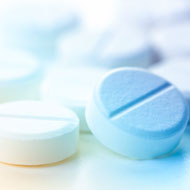
No medicine is ever 100 per cent safe
Giles Davis presented a comprehensive lecture on drug licensing, use of the 'Cascade' and the importance of pharmacovigilance all of which involve the Veterinary Medicines Directorate (VMD), in the professional practice stream at BSAVA Congress.
The cost of developing a new product for use in the veterinary market can range from 1 to 10 million pounds and take up to 10 years. Given the niche market nature of veterinary medicines, it is understandable why they sometimes cost more than human medications.
The VMD authorises all veterinary medicines sold in Great Britain - it is the UK's national competent authority for the regulation of veterinary medicines. EU legislation is currently being revised into a regulation that will be directly applicable without the need to be transposed by the Veterinary Medicines Regulations as is the case at the moment.
It is, at present, not known how the UK will be bound by these rules after Brexit but the VMD is negotiating to ensure that if we have to adopt the regulation it will be fit for purpose for our own market.
Once products are finally approved for use a summary of product characteristics (SPC) is produced. The SPC defines what beneficial effects the product has shown in the treatment, prevention or diagnosis of disease. It also provides information on a product in a standard format and is a legal document. The data sheet accompanying the product is based on the SPC. The SPC documents can be found on the VMD website on the product information database.
These stringent requirements together with the fact that meat from animals treated with some veterinary products may/will go into the human food chain are the reasons why there are far fewer veterinary authorised medicines than there are human medicines.
This situation sometimes causes availability issues when treating animals which the current legislation acknowledges by way of the 'prescribing cascade' which is a privilege only given to veterinary surgeons.
It is a fact, however, that no medicine - be it for human or animal use - is ever 100 per cent safe and it is sometimes not until a product has been used to treat a large number of patients that a rare adverse effect is discovered.
This highlights the importance of never assuming any medicine is totally safe and the need to practice pharmacovigilance, reporting all suspected adverse reactions. Any suspected lack of efficacy should also be reported. Individuals may report any adverse reactions etc to the marketing authorisation holder or the VMD. Since 1985, more than 68,000 adverse reactions have been reported in the UK. Last year alone there were over 6,500.
The VMD use this information they receive to ensure that the SPC accurately reflects all identified risks. They also have the power to suspend or revoke a marketing authorisation if any identified risks cannot be sufficiently mitigated.
There is no legal obligation to report adverse reactions to veterinary products. It says much for the veterinary profession that the UK has the highest reporting rates in Europe.



 The Greyhound Board of Great Britain has published new vaccination guidance, with all greyhounds registered from 1 January, 2027 required to have the L4 leptospirosis vaccination, rather than L2.
The Greyhound Board of Great Britain has published new vaccination guidance, with all greyhounds registered from 1 January, 2027 required to have the L4 leptospirosis vaccination, rather than L2.